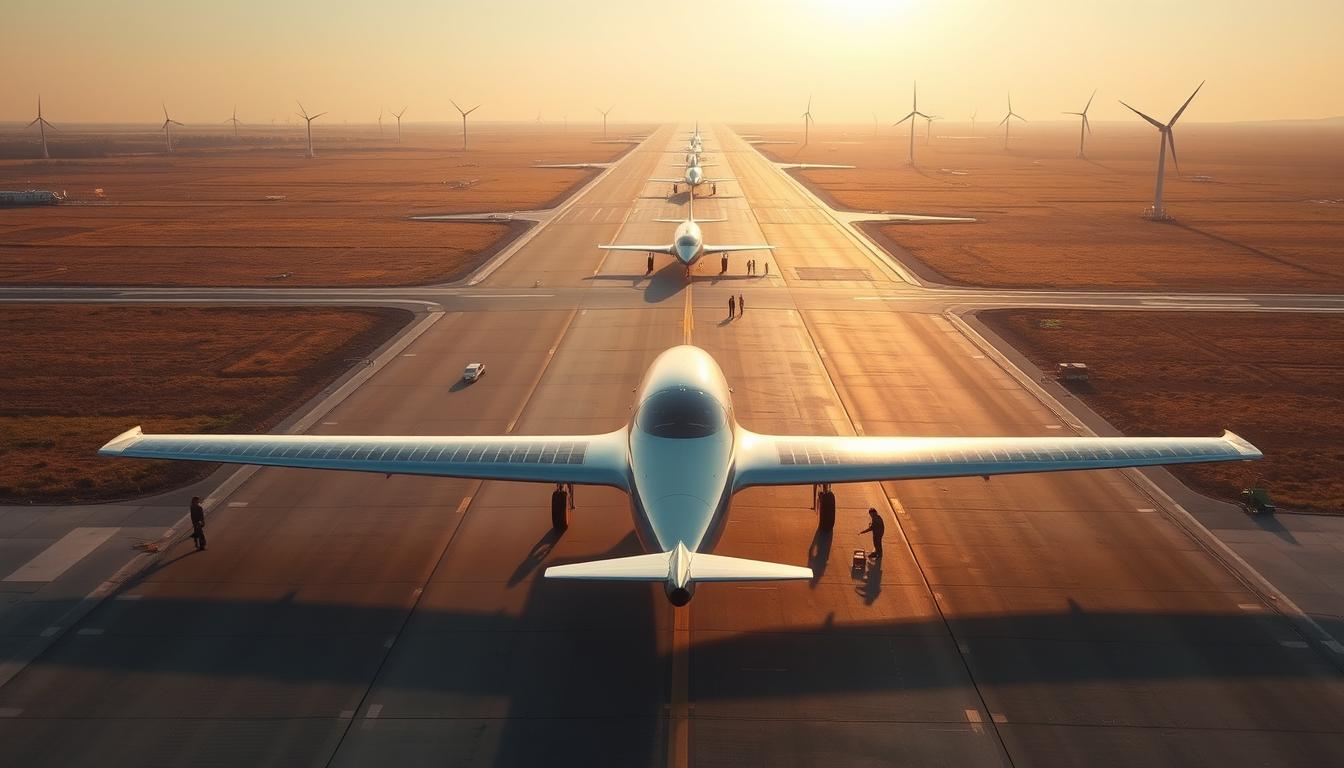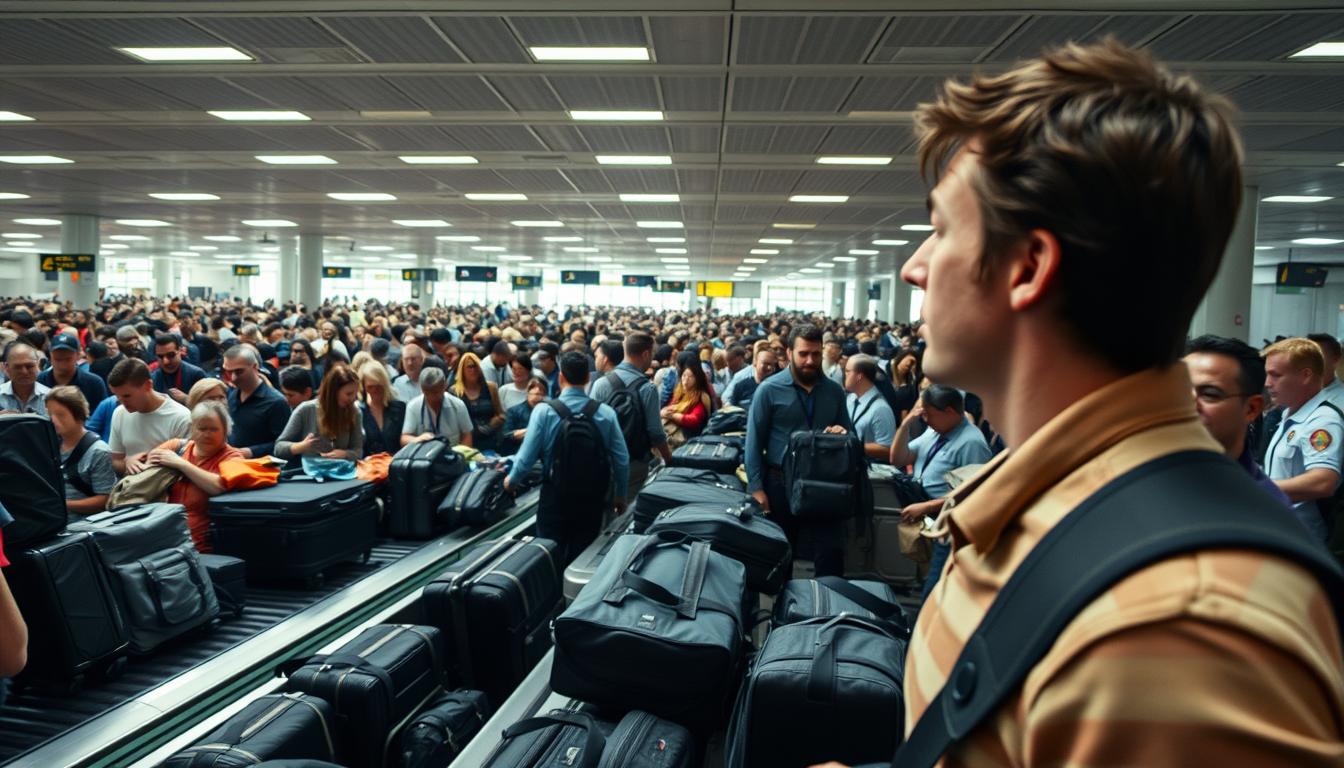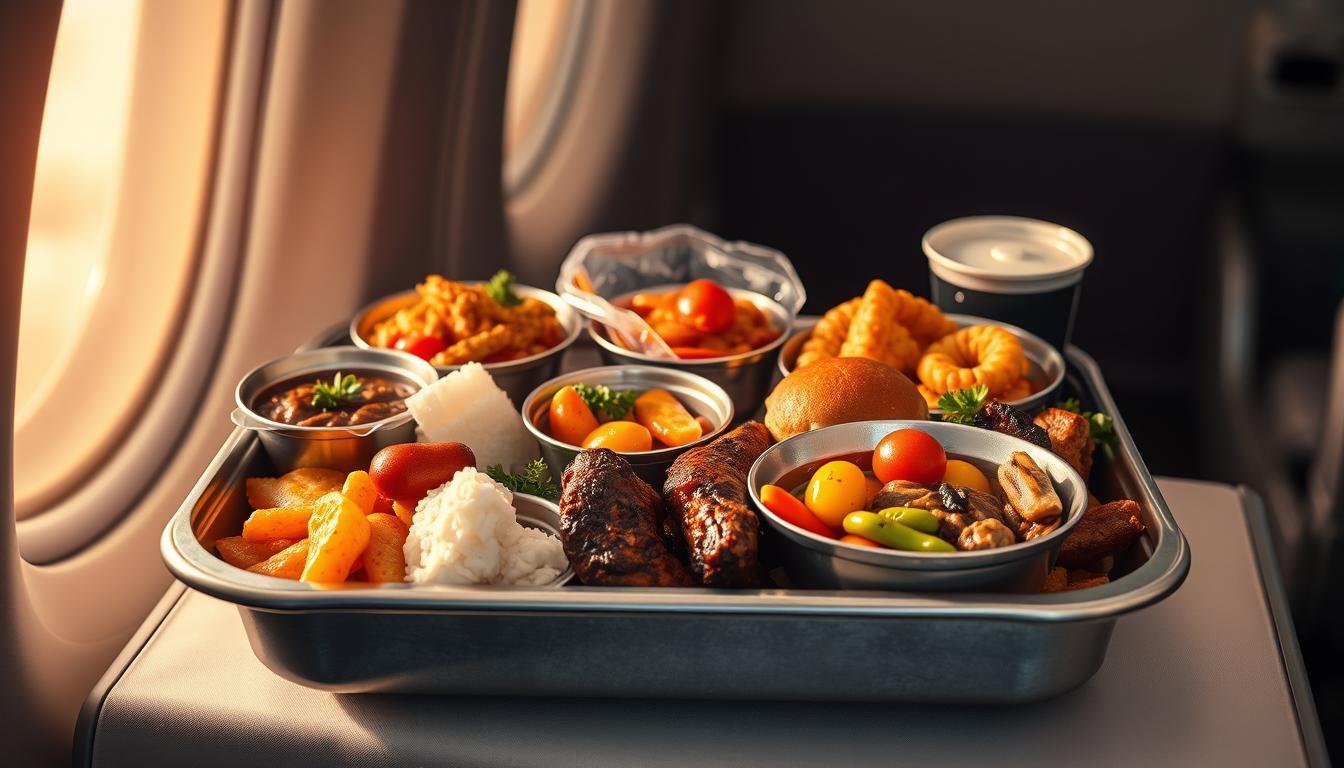Anúncios
Have you ever wondered why airline meals seem to taste different when we’re flying?
Altitude and cabin pressure affect our senses, especially our taste buds, because air pressure influences how we perceive flavors.
Anúncios
When we’re on board, the unique environment can alter our perception of the food served.
Today, we’ll learn more about why airplane food tastes different.
The Science Behind Taste at High Altitude
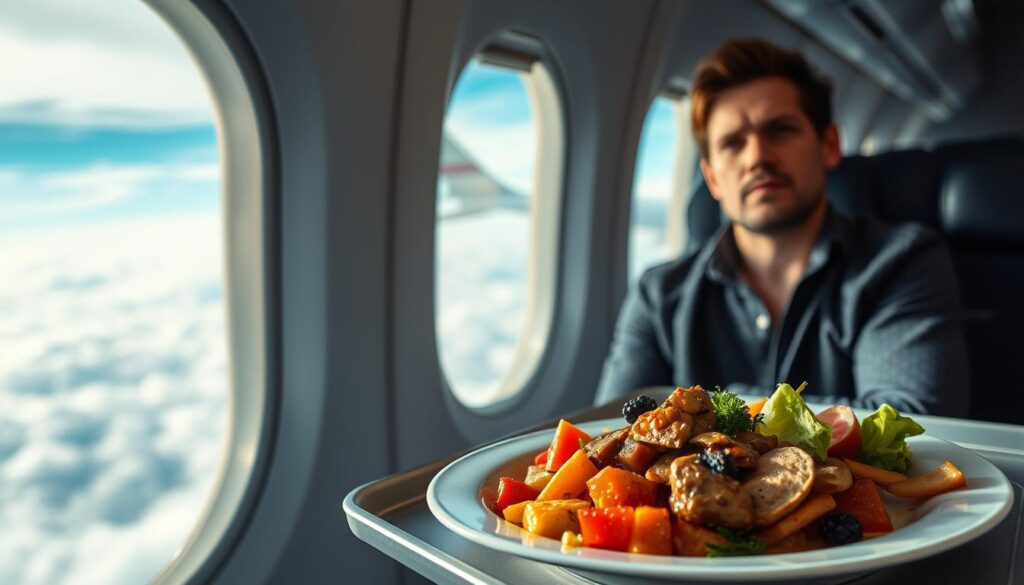
At high altitudes, the combination of pressure and low humidity affects our sense of taste. When we fly, cabin pressure and humidity are significantly different from conditions at sea level.
Anúncios
How Cabin Pressure Affects Our Senses
Cabin pressure on an airplane is lower than at sea level, which can influence our perception of flavors. Reduced pressure affects the taste buds’ ability to detect flavors, making food less palatable. Pressure can also affect our sense of smell, which is related to taste.
| Factor | Effect on Taste |
|---|---|
| Pressão da Cabine | Reduces the sensitivity of taste buds |
| Low Humidity | Dryness of taste buds |
The impact of low humidity on taste buds
Low humidity inside the airplane cabin also plays an important role in flavor perception. Low humidity can dry out the taste buds, making them less effective at detecting flavors.
Furthermore, dehydration caused by low humidity can affect the oral mucosa, reducing the ability to taste food, explaining why food may seem less flavorful during flights.
Why airplane food needs special adaptations
Food served on airplanes faces unique challenges that require special adaptations to ensure flavor. Conditions inside an airplane during flight are significantly different from those found on the ground, directly affecting taste perception.
Airlines must consider these factors when preparing meals, including the use of ingredients and techniques that can compensate for reduced taste sensitivity.
Seasonings and flavor enhancers used
To combat flavor loss, airlines use seasonings and flavor enhancers, chosen for their ability to enhance flavors, making meals more appetizing even in adverse conditions.
The use of seasonings such as pepper, herbs, and spices is common, as is the addition of flavor enhancers that help restore flavor intensity.
Specific preparation techniques for airline meals
In addition to the use of seasonings and enhancers, airlines employ specific preparation techniques to maximize the flavor of meals, which may include cooking methods that preserve moisture and flavor.
Choosing appropriate containers and packaging also plays an important role, ensuring that meals are served in optimal conditions.
The historical evolution of in-flight food
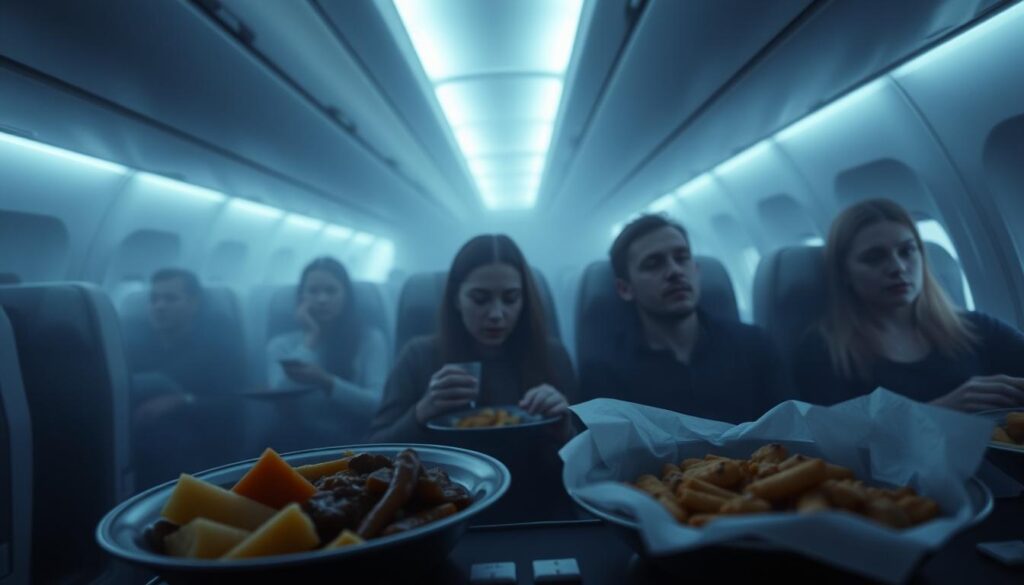
Since the early days of commercial aviation, in-flight food has undergone significant transformation. The first flights were luxurious and offered simple yet elegant meals to passengers.
Commercial aviation began to expand in the early decades of the 20th century, and with it, the need to serve meals to passengers became more evident. Food was one of the differentiating features airlines offered to attract and satisfy travelers.
What were the meals like on the first commercial flights?
On early commercial flights, meals were generally simple and light: sandwiches, fruit, and drinks. The quality and variety depended heavily on the airline and the route.
The transformation over the decades
Over the decades, in-flight food has evolved considerably. Airlines began offering more varied and sophisticated menus, especially in premium classes.
The transformation wasn’t just in the types of food, but also in preparation and presentation techniques. Today, many airlines strive to offer memorable dining experiences.
Differences between first class and economy class food
The onboard dining experience varies between First Class and Economy Class. While Economy Class offers standard meals for all passengers, First Class stands out for its gourmet options and personalized service.
What justifies the difference in quality
The difference in quality between meals served in First Class and Economy Class is explained by several factors.
First, First Class offers fresh, high-quality ingredients, often organic and seasonal. Furthermore, the dishes are prepared by renowned chefs who create exclusive menus for the airlines.
Another important factor is personalized service. First Class passengers can request special meals or customize their options according to their dietary preferences, which is not common in Economy Class, where options are more limited.
Premium dining experiences at altitude
Premium dining experiences in first class include not only the food itself, but also its presentation and service. Dishes are elegantly presented with fine china and high-quality cutlery.
Service is attentive and personalized, with flight attendants trained to meet the needs of each passenger.
In addition, some airlines offer exclusive dining experiences, such as wine and cheese tastings, elevating the in-flight experience to a new level of luxury and sophistication.
Special meals: options for specific diets
Airlines are increasingly attentive to the dietary needs of their passengers, and can now accommodate their dietary preferences even at 30,000 feet.
Vegetarians, vegans and religious
To accommodate various needs, airlines offer a variety of vegetarian and vegan options. These meals are carefully prepared to ensure they are not only delicious but also meet specific dietary restrictions.
- Vegetarian options that exclude meat but may include dairy and eggs.
- Vegan meals that are entirely plant-based, without animal products.
- Religious meals that accommodate specific dietary restrictions, such as kosher or halal.
These options not only satisfy dietary needs but also provide a varied and enjoyable dining experience.
Meals for people with allergies and intolerances
In addition to options based on dietary preferences, airlines also offer meals for those with food allergies and intolerances, including gluten-free meals for passengers with celiac disease or gluten intolerance, and lactose-free meals for those with lactose intolerance.
- Gluten-free meals prepared with carefully selected ingredients.
- Lactose-free options ensure that passengers with intolerances can enjoy their meals.
These special meals are a testament to the airlines’ commitment to providing a comfortable and safe travel experience for all passengers.
Tips to improve your airplane food experience
Improving your airline meal experience is possible with a few simple strategies. While airplane food may have limitations due to altitude and pressure conditions, there are ways to make your meal more enjoyable.
What to bring to complement the meal
One of the best ways to enhance your in-flight dining experience is to pack some healthy snacks to complement your in-flight meal.
Options like nuts, dried fruit, and cereal bars are ideal. Also, consider packing a special snack, like a homemade sandwich or a fresh salad, as long as they meet airport security standards.
Best choices on the in-flight menu
When choosing your meal from the in-flight menu, opt for dishes known for retaining their flavor even at high altitudes. Some airlines offer gourmet options that may be more satisfying.
- Beverages that help enhance flavor: Beverages like tea and coffee can help enhance the flavors of your meal. Hydration is also crucial during the flight, so drink plenty of water.
- Foods that retain their flavor at altitude: Foods with intense flavors, such as those with spices or herbs, tend to be more satisfying during the flight. Additionally, dishes with a good mix of textures can make the meal more interesting.
With these tips, you can make eating on an airplane more enjoyable and satisfying.
Conclusion

Airplane food tasting different is a phenomenon that involves several factors, from cabin pressure to low humidity, directly affecting taste.
Airlines have been working to adapt their culinary offerings to these conditions, using specific seasonings and preparation techniques to minimize the impact on flavor.
Furthermore, the evolution of in-flight food over the years reflects a continuous effort to improve the passenger experience by offering options that meet diverse needs and preferences.


